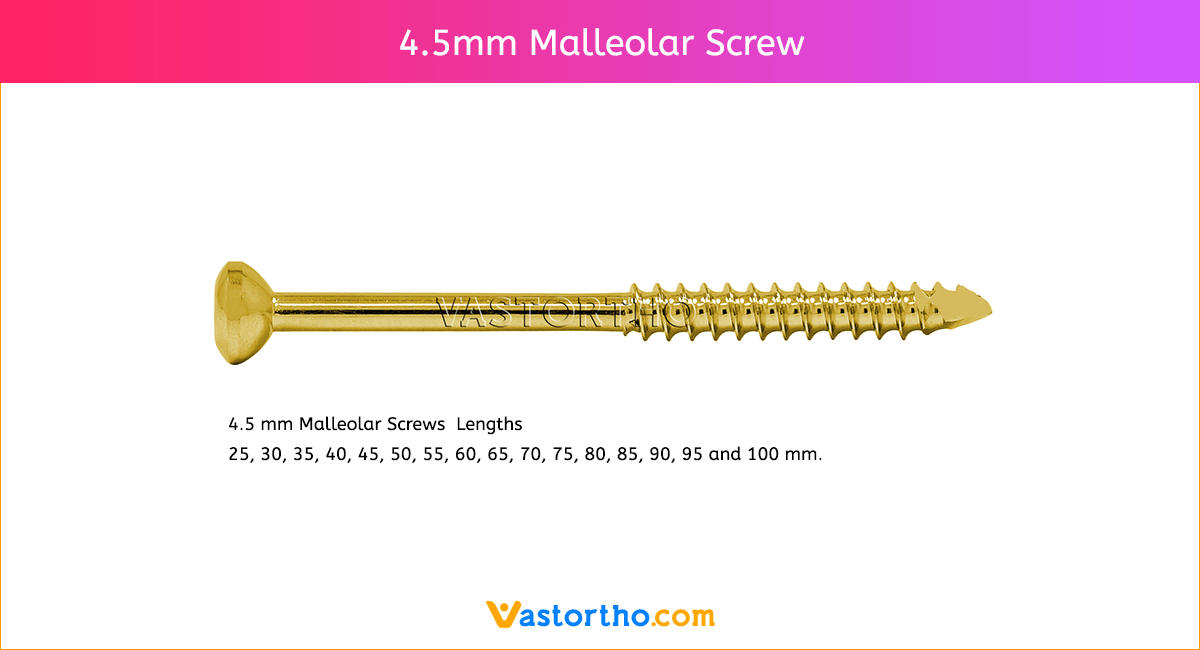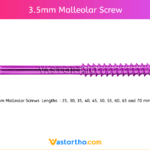4.5mm Malleolar Screw Specification, Uses, Sizes and Surgical Techniques.

4.5mm Malleolar Screw Specification
4.5mm Malleolar Screw has a smooth shaft and is partially threaded. Malleolar Screws with cortex thread, shaft and trocar tip have limited use in the metaphyseal area, distal humerus, trochanteric area and sometimes in the ankle, where the bone is rather dense.
- 4.5mm Malleolar Screw available lengths are 25mm, 30mm, 35mm, 40mm, 45mm, 50mm, 55mm, 60mm, 65mm, 70mm, 75mm, 80mm, 85mm, 90mm, 95mm and 100mm.
- Screw has a smooth shaft and is partially threaded.
- Screws available in both Titanium and Stainless steel.
4.5mm Malleolar Screw uses
4.5mm Malleolar Screw is designed to be used for fracture fixation of small fragments in cancellous bone. It is primarily used in interfragmental compression bone plates and used in hard cortical where buttress thread form provide enhanced pull-out resistance. Hemispherical head diameter ensures optimal annular contact with washers and plates when screw is angled. Partially threaded offers best fit of threads into far bone fragment, for better interfragmentary compression.


